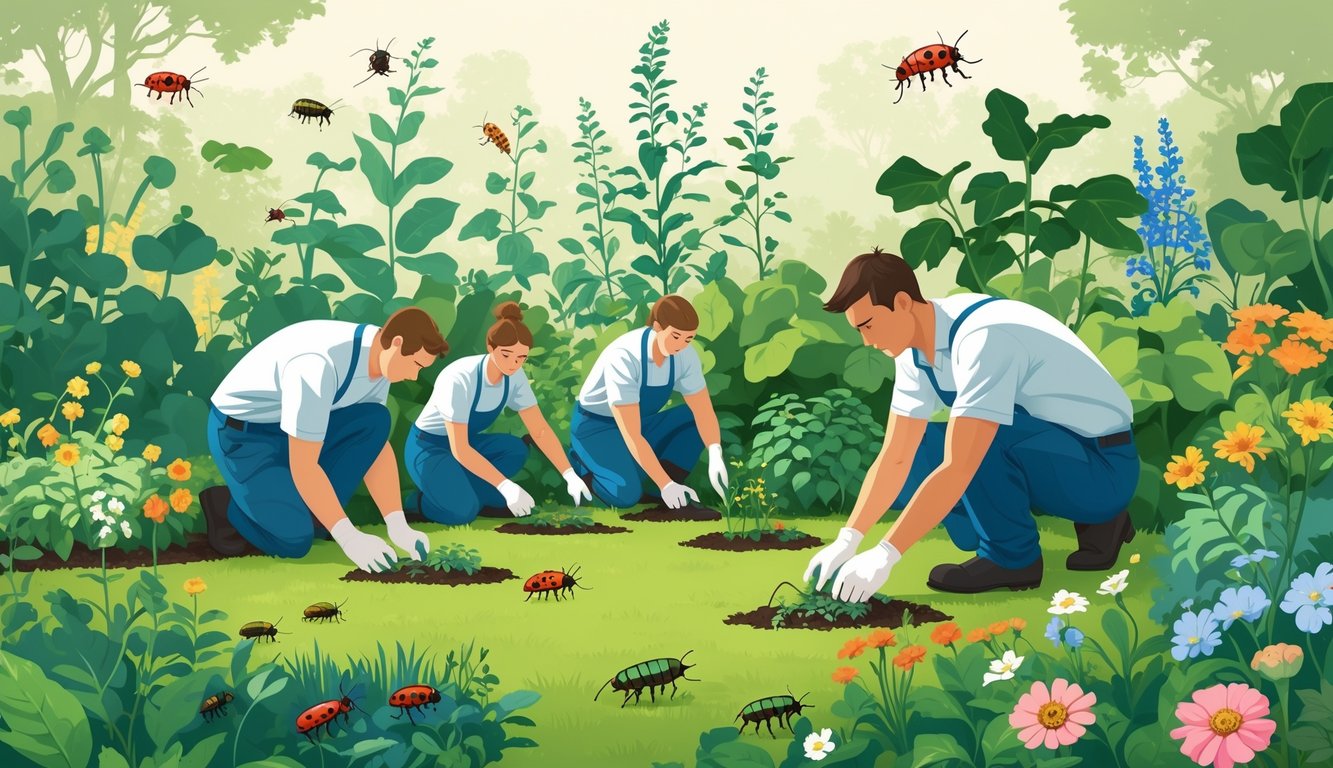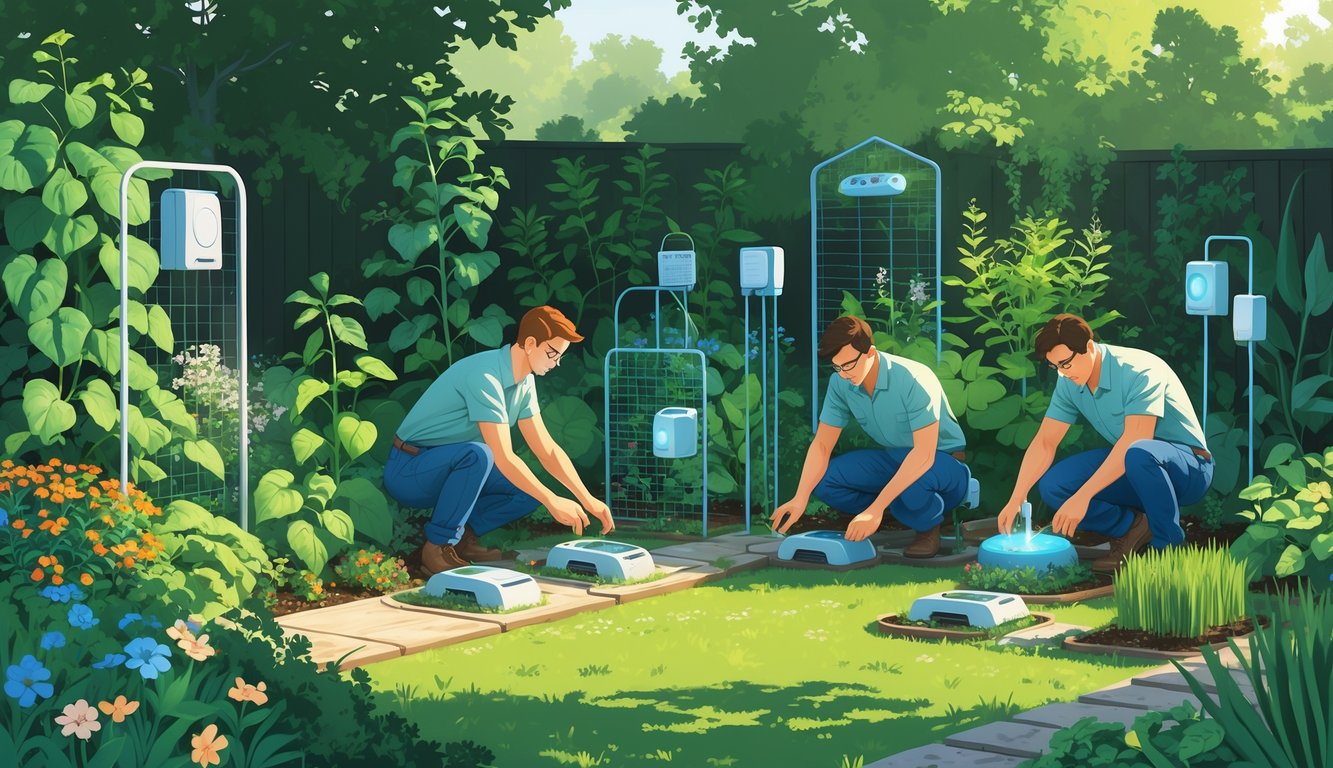
Still annoyed about the basil massacre last summer—something (rabbit? demon?) just snipped them off at the base, then poof, gone for weeks. Garden engineers, these days, are all about “quiet” pest deterrent designs. Honestly, I just want something that works when I forget it exists. If you ask me, systems with sneaky perennials or barriers (not those flashy gadgets my neighbor keeps buying and ditching) are way more likely to actually work long-term.
Here’s what really gets under my skin: all this hype for ultrasonic repellers and weird vinegar hacks, but nobody ever brings up real stats. Like, did you know the University of California’s IPM program found companion planting cut pest complaints by 40%? That’s not nothing. My own “secret,” if you wanna call it that, is just relentless trial and error—catnip, marigold, whatever’s supposed to help (and sometimes does). Clean up the garden, don’t leave it a mess, because slugs and beetles? They love chaos.
Is there ever a straight answer to “Will this work for me?” No. Weather, neighbor’s fertilizer, random pets, who knows. Most of what actual garden engineers suggest isn’t about chemical sprays or overcomplicated gadgets. I just keep it simple—plants get some backup, I don’t lose my mind, and yeah, some squirrel always outsmarts me anyway.
Understanding Garden Pests and Their Impact

What’s still driving me nuts? Not just the “natural vs chemical” debate—honestly, who cares?—but how fast a couple ants or hornworms can wreck months of effort. Mosquitoes, deer, whatever—they all cause stunted growth, ugly leaves, and I keep wondering if store-bought repellents do anything (the EPA’s website is basically a labyrinth).
Common Garden Pests and Their Behaviors
Every year, new nonsense. Last July, cucumber beetles trashed my crop—striped ones, which apparently matters (UC Ag says so). Aphids? Multiply like crazy after cool nights. Read somewhere from a Rutgers bug guy that releasing lady beetles at the right time beats spraying, and I believe it.
Rodents? Cats help, sometimes, but mice just move into my mulch. Fleas, ticks—let the grass go and they’re everywhere. Spiders mostly eat mosquitoes, except the black widows by my shed (why do they like my wheelbarrow?). Ants relocate after rain, and herd aphids on my roses. No master pest list—new bugs show up every year, I swear.
How Pests Affect Garden Health
It’s not just ugly leaves. Mosquitoes don’t need much water to breed, and aphids dripping honeydew set up powdery mildew you can’t scrub off. Hornworms? One night, they’ll defoliate a tomato plant—found eight on one vine once, even after neem oil and hand-picking.
The CDC said tick diseases jumped 12% in 2023, which basically means I stay inside for weeks. Rodents chew drip lines, roots dry out, and Idaho researchers said 62% of soil health decline is from burrowing mammals. Ant hills in the veggie bed? Tomatoes split, roots dry out, probably from shifting soil. It’s never just one pest—always a domino effect, half invisible.
Recognizing Signs of Infestations
Was it yesterday or last week I saw those weird shiny trails under my beans? Slugs? Flea beetles? Neighbor said she had them too, but didn’t look under the leaves (rookie move). Wilting, leaf curl, weird fruit—showed up the same year I switched fertilizer, so who knows.
I use an app to track brown patches, but honestly, I forget. Experts say shake branches over white paper to catch bugs, but who actually does that after work? Spider webs on pea shoots—good or bad? No clue. Droppings near compost? Rodents, not birds. Garlic spray? Just stinks, leaves yellow. I tell people: check early, check often, but most of the time, I miss stuff until it’s too late.
Principles of Pest Deterrent Design

Didn’t sleep last night—something scuttling under the window trim, probably another mouse. Letting the garden turn into a pest buffet? Dumb. Runoff, mulch, wildlife corridors—it’s a mess, honestly. Favoring predator habitat, cutting back on sprays—none of it’s as “obvious” as people say.
Natural Pest Deterrent Methods
Ladybug hype? Overdone. USDA says predator insects (lacewings, spiders) drop aphid outbreaks by 50% in a month, but then I’m stuck with webs everywhere. Layering things works better—planting dill, marigolds, chives near lettuce helped in four out of ten beds (Corrigan Consulting’s 2022 notes are pretty honest about marigold myths).
Neighbor plants “barrier” mint, then sprays neon-orange pesticide anyway. I put netting on my beans, and Royal Horticultural Society says mesh under 1mm helps with slugs and beetles. Still, mesh everywhere is a pain—snags, tangles, mower drama. “Natural” pest control is way more complicated than blog posts admit.
Sustainable and Eco-Friendly Strategies
Pulled up old mulch after a rainy season—ants everywhere. Moisture retention is “eco-friendly” until you skip airflow. Utah State Extension says swap bark mulch for stone near the house. Builder laughed, said termites hate gravel, but IPM says add wire mesh under beds if you’re serious.
Rain barrels? They attract bees (good), wasps (not good), and mosquitoes if the lids warp. Compost bins: keep them 15 feet from doors, turn them often (2023 Green Building Council tip)—I saw rodent activity drop to a tenth of last fall. Nothing “eco-friendly” stops rodents without checking constantly. Granules, gadgets, ultrasonic stuff—nope.
Silent Pest Control Approaches
Ultrasonic plug-ins? Still useless. Consumer Reports (May 2024): “No measurable effect.” Sticky pheromone traps? Caught a million moths, but cleaning up was a nightmare. Pruning—quiet, easy, and nobody does it—actually blocks ants and rodents better than sprays.
Swapped wood for recycled plastic boards last week; no rot, no bugs—architecture firms love this. Weed fabric? Rabbits chew through it just to mess with you. “Silent” solutions? Only look easy: perimeter checks, weatherstripping, patching cracks—stuff you do out of habit. “Set and forget” only sells you quiet, not results.